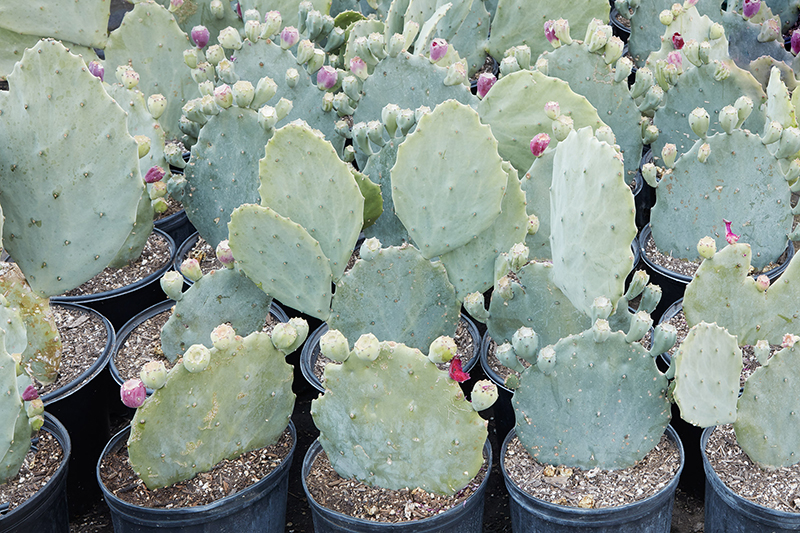


| height | 3–5 | |
| width | 6–10ft | |
| tolerates | Cold, Drought, Heat, Pots, Wind | |
| water needs |
Low | |
| water info |
Opuntia are extremely drought-tolerant, which means that no additional water should be needed once the plant is established. Newer plants might show that they are thirsty when their leaves begin to shrivel. If this happens, give them a bit of water; otherwise they might start to drop their paddles. Often these shed paddles will root and grow once rain comes. To keep your opuntia plump and lush-looking, water it every two or three weeks during the summer. Opuntias prefer good drainage, but they are tolerant of a wide range of soils. |
|
| hardy to |
10F | |
| exposure | Part Shade – Full Sun | |
| indoor outdoor |
Outdoor | |
| drainage | In Ground: Cactus Mix, In Pots: Cactus Mix, Tolerates Sandy Soil | |
| fertilizing | All Purpose, Low Needs | |
| origin | N America | |
| california native |
No | |
| sunset zones |
8–24 |
Full Sun
Six or more hours of sun beams directly landing on the plant's leaves.
Part Shade
Three to five hours of sun beams directly landing on the plant's leaves.
Part Sun
One to two hours of sun beams directly landing on the plants leaves.
Full Shade
The plant is never fully lit by sun beams,
but is in a bright spot or has dappled sunbeams playing over the leaves throughout the day.
Deep Shade
The plant never has dappled light on the leaves, and is in a place that feels dim, even on a nice sunny day.
